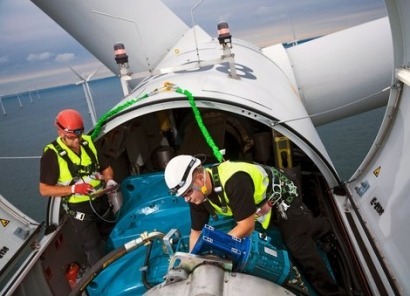
The analysis by the Carbon Trust was funded by the UK government’s Foreign and Commonwealth Office and identifies technical, policy and regulatory challenges faced by the industry. It maps existing local solutions against where experience from the more developed European offshore wind industry could be leveraged to cut consenting, planning and construction costs, and speed up deployment of offshore wind in Japan.
A number of key areas were identified in the report, including an increase in RD&D with regard to innovation, an increase in the availability of installation, operation and maintenance vessels, the use of floating LIDAR technology to reduce the cost of gathering meteorological data at site-scale and a need to assign consenting authority to one central department and streamline environmental impact assessment regulations.
Key areas to focus on include floating wind, novel foundations and collecting offshore environmental measurements. With regard to vessels, Japanese companies could seek to import bespoke vessels or construct them locally.
Offshore wind is a potential growth area for Japanese energy generation and the Japanese government has already expressed a commitment to develop and increase renewable power technologies and deployment in the country. A national target of 37 GW of offshore wind power set by the Japanese Wind Power Association (JWPA) is expected to be installed by 2050, including both bottom-fixed and floating offshore wind turbines.
“Japan’s offshore wind industry is relatively embryonic as historically the emphasis has been on nuclear” said Al-Karim Govindji, Senior Manager at the Carbon Trust commented. “Although in the past Japan excelled at shipbuilding, it presently lacks experience in large scale engineering projects offshore; experience the UK offshore wind industry has benefited from through decades of oil and gas exploration. It should be noted that challenging climatic and geological factors in Japan mean that European methods of construction and installation cannot always be applied. Japanese manufacturers are leading the way in developing bespoke solutions needed to cope with Japan’s challenging environmental conditions; however our analysis shows that experience from Europe on developing the right technologies and regulatory market conditions to foster an industry with enormous potential could deliver results quicker.”
Japanese offshore wind potential has been estimated at around 1,570GW compared to 280GW of onshore wind, which is constrained by land availability and geography. 80 percent of the offshore wind resource is located in a water depth greater than 100 metres which will require bespoke deep water turbine technology such as floating turbines. However, leveraging technologies from Europe could accelerate Japanese expertise in this area. Novel floating technologies that can withstand the unique conditions in deep waters around Japan will need to be developed if the country is to reach its national target of 37 GW installed capacity by 2050.
Other challenges that need to be addressed include harsh conditions presented by typhoons, tsunamis and earthquakes. The impact of this unique mix of environmental factors on the true cost of energy from offshore wind is not well understood at present but understanding of these factors will be vital in order to help the Japanese government set a realistic Feed-In-Tariff (FIT) to incentivise and de-risk private investment.
Other barriers include lack of grid transmission capacity, lengthy consenting time due to conflicts with the powerful fishing cooperatives and costly environmental impact assessments which can take up to 4 years.
The need to bolster investment into port infrastructure and the development of a local supply chain around deep water foundations and installation vessels are also areas that need to be addressed.
For additional information:
Appraisal of the Offshore Wind Industry in Japan (PDF)
Mapping existing technology solutions to barriers identified in Japan’s Offshore Wind industry (PDF)

